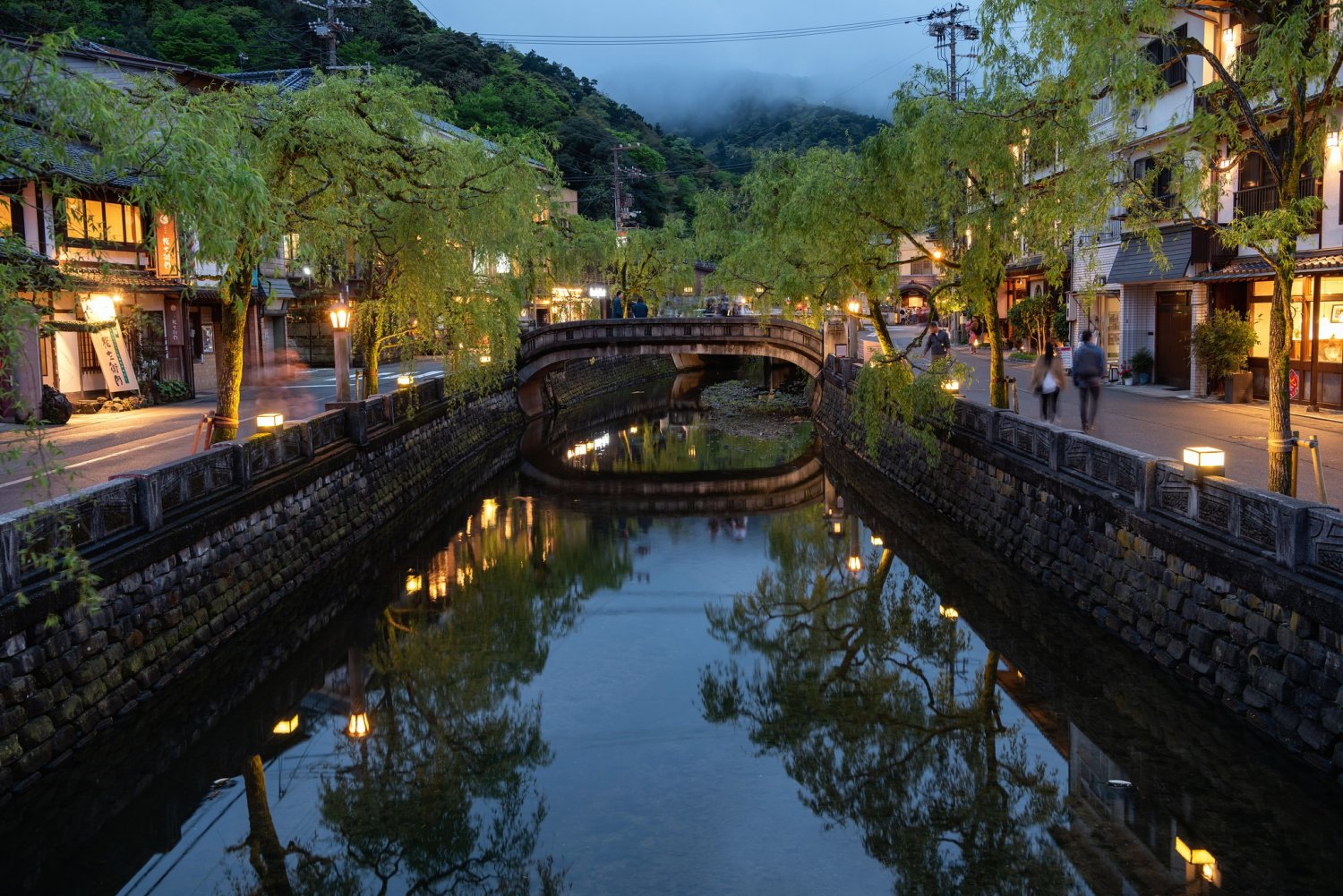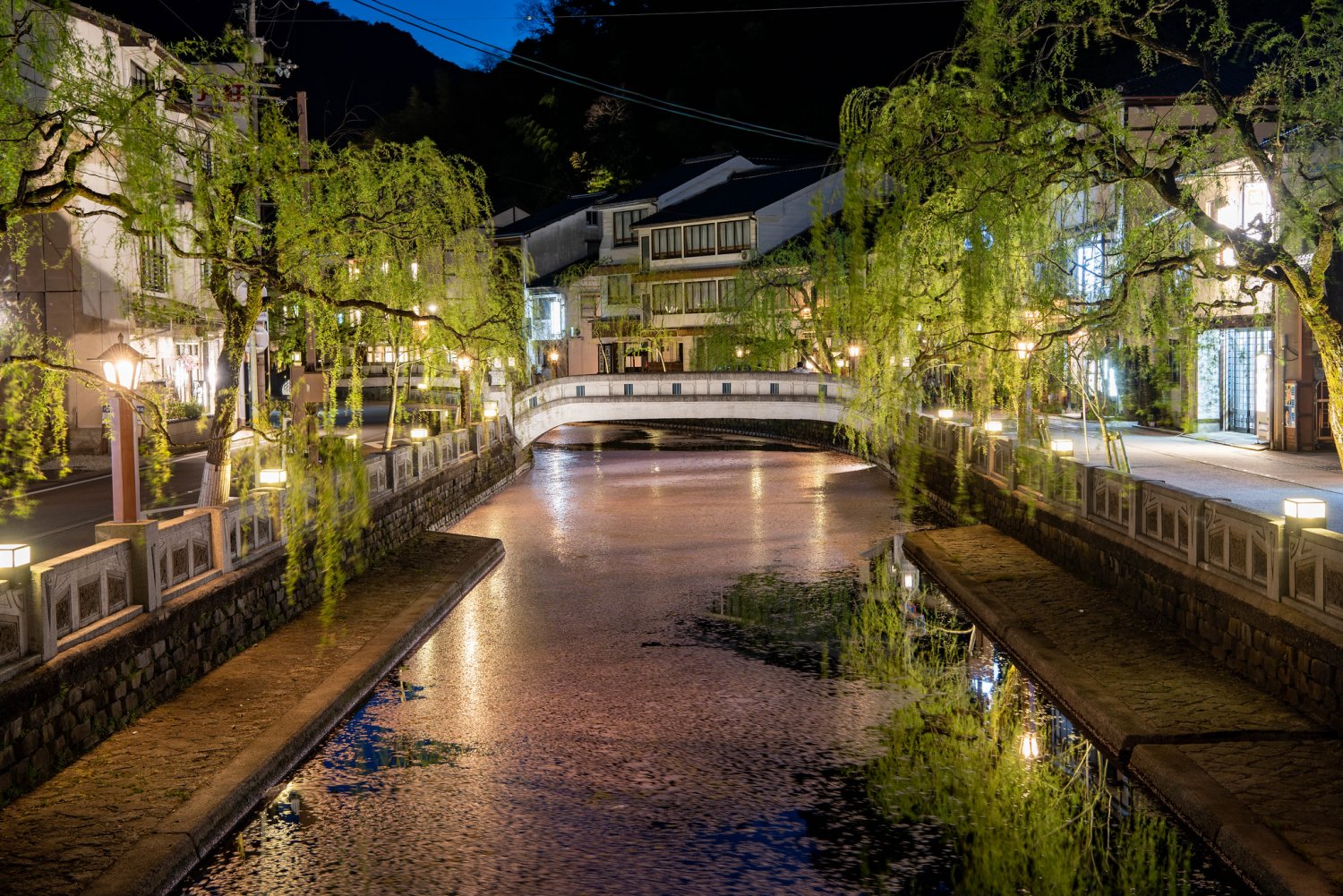Discover Kinosaki Onsen: A Timeless Hot Spring Town with 1300 Years of History
Nestled in the northern part of Hyogo Prefecture, Kinosaki Onsen boasts a 1300-year history as one of Japan’s premier hot spring destinations. The town, which has been cherished since the Nara period, is renowned for its seven public hot springs, historical sites, literary connections, and a spirit of resilience that saw it rebuild after the Great Kanto Earthquake in 1923.
With its rich history, unique hot springs, scenic beauty, and warm hospitality, Kinosaki Onsen offers an unforgettable experience for those seeking relaxation and a deep connection with Japanese culture and tradition. Whether soaking in the historic baths or wandering through the charming streets, visitors are sure to be enchanted by the timeless allure of this remarkable town. It’s an excellent place to escape from the crowds of Japan’s tourist hot spots and grasp the authenticity of small town life.
A Glimpse into History
Kinosaki Onsen's origins date back to 717 AD, when the monk Dochi Shonin arrived and prayed for 1,000 days to cure people suffering from incurable diseases. Guided by divine revelation, he discovered the hot springs in 720 AD, marking the birth of Kinosaki Onsen. Dochi Shonin later founded the Onsenji Temple, establishing a legacy of healing and spirituality that continues today.
The Spirit of the Town
Walking through Kinosaki is like stepping back in time. The townscape, preserved with traditional architecture and willow-lined streets, exudes a nostalgic charm. Visitors are encouraged to wear yukata (casual kimono) as they stroll through the town, visit the hot springs, and enjoy the local cuisine.
Kinosaki is also a literary town, having inspired numerous writers, including the famous novelist Naoya Shiga, who frequently visited and wrote about the town. The beautiful scenery, with its cherry blossoms in spring and snow-covered landscapes in winter, offers a different experience each season.
Rebuilding and Resilience
Kinosaki Onsen's history includes a remarkable recovery from the Great Kanto Earthquake in 1925, which devastated the town. The spirit of cooperation and community led to a swift and comprehensive rebuilding effort, restoring Kinosaki to its former glory.

The Unique Hot Springs
Kinosaki Onsen is celebrated for its seven "sotoyu" (public baths), each with its own distinct charm and history:
- Mandara Yu: Named after the Mandala sutra chanted by Dochi Shonin, this bath promises prosperity and good fortune. Its outdoor bath offers stunning views of the surrounding natural beauty.
- Goshono Yu: Known for its elegant, open-air bath, this onsen is associated with fire prevention and good relationships. It takes its name from a visit by a royal family member in the 13th century.
- Ichino Yu: Once called “Shin Yu,” it gained fame in the Edo period and was later renamed “Ichino Yu” for being the top-rated bath in the country. It offers both a cave bath and an outdoor bath.
- Yanagi Yu: A small but charming bath named after the willow trees from which it springs. It is popular for its intimate atmosphere.
- Jizo Yu: This bath is named after the Jizo deity and features a family bath and a spacious rest area.
- Kono Yu: With its legend of a stork healing its injured leg in the waters, this bath symbolizes long life and happiness.
- Sato no Yu: Known for its elegant, open-air bath with a view of the mountains.
Sightseeing & Activities
Gastronomic Delights
Kinosaki Onsen is a gourmet paradise, known for its fresh seafood from the nearby Sea of Japan and premium Tajima beef. Visitors can enjoy a range of goodies from traditional kaiseki meals to casual street food.
Museums:
-
KINOBUN - Kinosaki Literary Museum
- Address: 357-1 Yushima, Kinosaki-cho, Toyooka, Hyogo 669-6101
- Hours: 9:00 AM - 5:00 PM (Last entry at 4:30 PM)
- Phone: 0796-32-2575
-
Kinosaki International Art Center
- Address: 1062 Yushima, Kinosaki-cho, Toyooka, Hyogo 669-6101
- Phone: 0796-32-3888
-
Kinosaki Straw Craft Museum
- Address: Yushima, Kinosaki-cho, Toyooka, Hyogo 669-6101
- Hours: 10:00 AM - 4:00 PM (Last entry at 3:30 PM)
- Phone: 0796-32-0515
-
Otagaki Shiro Memorial Museum
- Address: 806-1 Yushima, Kinosaki-cho, Toyooka, Hyogo 669-6101
- Hours: 9:00 AM - 4:00 PM
-
Genbudo Museum
- Address: 1347 Akaishi, Toyooka, Hyogo 668-0801
- Hours: 9:00 AM - 5:00 PM
- Phone: 0796-22-4774
-
Onsenji Temple Treasure Museum
- Address: 985-2 Yushima, Kinosaki-cho, Toyooka, Hyogo 669-6101
- Hours: 9:00 AM - 4:30 PM
- Phone: 0796-32-2851
Parks or Theme Parks:
-
Genbudo Park
- Address: 1347 Akaishi, Toyooka, Hyogo 668-0801
- Hours: 9:00 AM - 5:00 PM
- Phone: 0796-22-4774
-
Hyogo Prefectural Stork Sanctuary Park
- Address: Toyooka, Hyogo 669-6101
-
Kinosaki Marine World
Outdoor Activities (Hiking, etc.):
-
Daishi Mountain Hiking Course
- Description: A 1-hour course featuring stone statues
-
Takeno Beach
- Description: A popular swimming spot in summer
Sightseeing:
-
Onsenji Temple
- Address: 801 Yushima, Kinosaki-cho, Toyooka, Hyogo 669-6101
- Hours: 8:00 AM - 6:00 PM
-
Kinosaki Ropeway
-
Hiyoriyama Coast
- Address: Seto, Toyooka, Hyogo 669-6122
- Description: Coastal cliffs with legendary islands
-
Shisho Shrine
- Address: 447 Yushima, Kinosaki-cho, Toyooka, Hyogo 669-6101
- Description: Guardian shrine of Kinosaki Onsen
-
Rinichi Mountain
- Address: Kinosaki-cho, Toyooka, Hyogo 669-6115
- Description: Offers a chance to see sea clouds
-
Rakuryu Bay and Hanakake Jizo
- Address: Rak, Kinosaki-cho, Toyooka, Hyogo 669-6111
- Description: Scenic bay with a legend of Hanakake Jizo
-
Izushi
- Description: Historic town famous for its Edo-period buildings and soba noodles

Access
From Kyoto:
By Train:
-
JR Limited Express Kinosaki:
- Take the JR Limited Express Kinosaki from Kyoto Station directly to Kinosaki Onsen Station. The journey takes approximately 2 hours and 30 minutes.
-
JR Limited Express Kounotori:
- Take the JR Limited Express Kounotori from Kyoto Station directly to Kinosaki Onsen Station. The journey also takes about 2 hours and 30 minutes.
From Okayama:
By Train:
- JR Limited Express Super Hakuto:
- Take the JR Limited Express Super Hakuto from Okayama Station to Tottori Station (approximately 2 hours).
- Transfer to the JR Limited Express Hamakaze from Tottori Station to Kinosaki Onsen Station (approximately 1 hour and 30 minutes).
find your next getaway
Kumamoto
2 adults